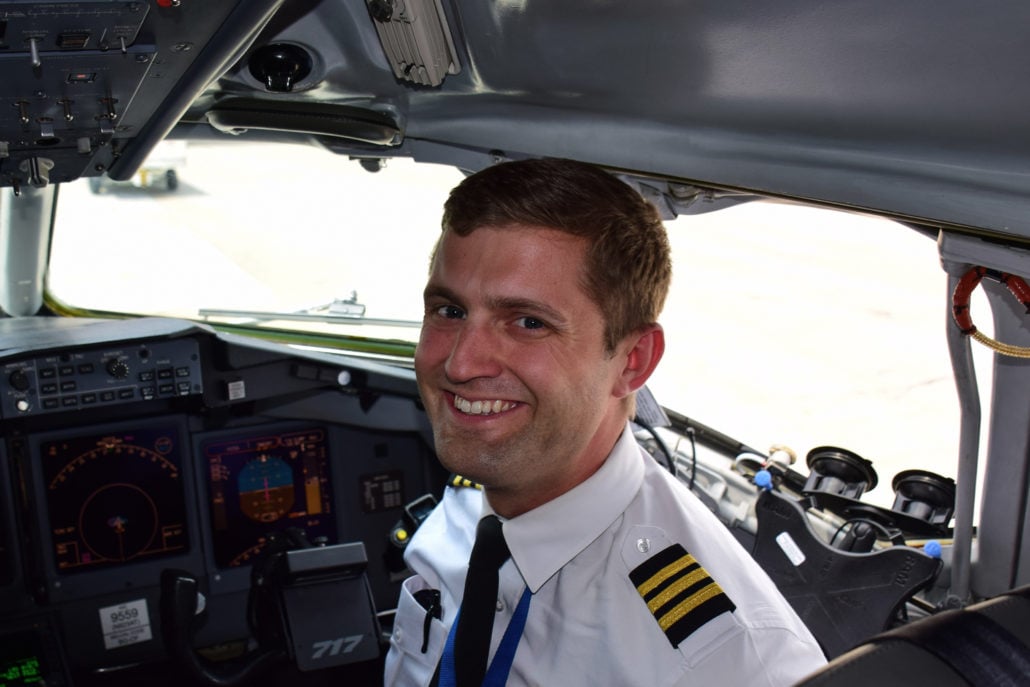
In our Ask a Pilot series, pilot Spencer Marker answers one of your aviation-related questions each week. See past installments here and submit your own to Whitney@johnnyjet.com.
The question
Hi Spencer, what is that mechanical sounding noise over the wing of an Airbus? It sounds kind of like a barking dog.
—Neil H.
The answer
Hey Neil. Thanks for writing in this week. As a former Airbus pilot, I used to get lots of questions from passengers about what exactly that noise is. First of all, the noise I assume you’re speaking of is this.

In this video from my friends at PlaneSpottersBerlin, we hear the “barking dog” very clearly. While this sound may seem unusual for many travelers, its presence actually indicates a perfectly functioning airplane. The noise originates from the aircraft’s Power Transfer Unit, or PTU, which is a component of the airplane’s hydraulic system. Let’s take a look at what exactly the PTU does, and why it makes that noise!
Hydraulics
In its simplest form, hydraulics is the use of a liquid under pressure in order to exert some mechanical force. In your car, hydraulic pressure is sent from your brake pedal to your brake calipers to exert pressure on your car’s brake rotors, slowing you down as you drive. In aviation, hydraulic pressure is employed extensively throughout the airplane. Everything from brakes and flaps to the landing gear and even the flight controls themselves uses hydraulic pressure to help move.
In the first few decades of aviation, a pilot’s flight controls were moved by a series of cables and pulleys woven throughout the body of the airplane. This direct connection was fine for lighter and slower moving aircraft. However, when airplanes became larger and much faster, the force a pilot had to exert to fly the aircraft became too great. Additionally, with the advent of retractable landing gear, engineers had to design a way to move these large surfaces in a strong wind with nominal effort from the flight crew. Hydraulic power was seen as a way to accomplish both tasks.
The first aircraft featuring both hydraulically powered landing gear and hydraulically aided flight controls was the Lockheed Constellation. This four-engine, pressurized airliner first flew in 1943 and was considered cutting edge for its time. The airplane would go on to be the flagship of airlines like TWA and Pan Am (which introduced the first-ever scheduled round-the-world service, Pan Am Flight 1, with the aircraft) until the introduction of jet-powered airliners in the following decades.
So how does an aircraft hydraulic system work? Great question! An airplane’s hydraulic system works by using a pump, which is most often electronically or engine driven, to create very high pressure in a fluid. Most modern aircraft employ a hydraulic pressure of 3000psi, but some aircraft use pressure as high as 5000psi! This pressure is used to move an actuator or piston that’s connected to the part of the airplane the pilot wishes to move. Hydraulic actuators can be seen every day in heavy construction equipment, which allows the operator to move the machine’s bucket or arm by simply moving a joystick in the cab.
We use this fluid under pressure to raise and lower our landing gear, move our flight controls and steer the airplane on the ground, and in numerous other applications large and small.
The PTU
So how does the PTU fit into the hydraulic system? Well, in modern aviation, redundancy is of utmost importance. This way, if a component fails, there are two or three backups to ensure the safe continuation of the flight.
The Airbus A320 employs three separate hydraulic systems. Each is pressurized by a different source for redundancy. Two of the systems are connected by our friend, the Power Transfer Unit. The PTU links the two systems mechanically and is used as a backup in case a primary pump fails. The PTU transfers hydraulic pressure (not fluid) mechanically to ensure both systems are properly pressurized and functioning properly. The side effect of performing its job properly is its signature sound!
So, I imagine you’re thinking that hearing the PTU at all means something has failed! That’s not the case. In the A320, the PTU is tested automatically while we start the second engine to ensure it’s functioning properly. This test is what the video above is capturing. Other times the PTU can be heard include during landing gear retraction or extension, when the load on the hydraulic system is the highest, and when the airplane arrives at the gate and the engines are shut down. In all of these instances, the PTU is working exactly as it should.
To sum up
Thanks for the question this week, Neil. Your question really allowed me to look back on my time flying the A320 and some of its more unique attributes. To passengers, nothing is more unique than the mechanical song of the PTU, which can be heard so clearly throughout the cabin. While the noise may be disheartening to some, it’s music to my ears. Its mechanical whine tells me and the pilots that fly the Airbus every day that the PTU is functioning properly, and ready to do its job.
Thanks again for the question! Have you heard the famous Airbus “barking dog”? Share your stories below! And if anyone has a burning aviation question or something you would like cleared up, drop us a line at Whitney@johnnyjet.com to get your question featured in an upcoming Ask a Pilot column.
Tailwinds,
—Spencer



